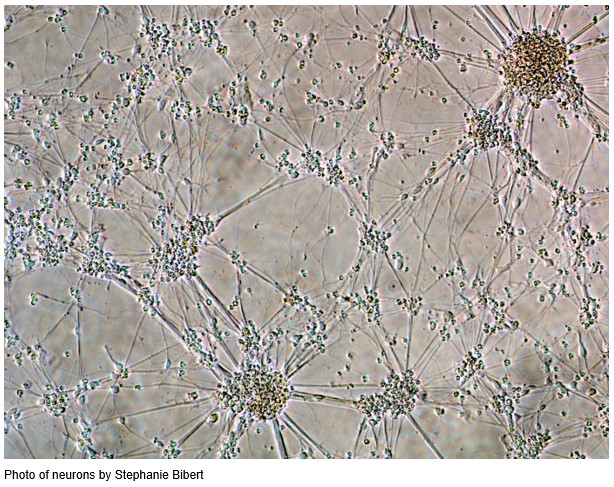Functional Immunogenetics of Viral Infections
Increasing evidences suggest that susceptibility to viral infections depends, at least in part, from host genetic factors. Over the years, our group developed several lines of research to detect such factors and understand the biological mechanisms by which they influence immune responses to viruses such as Herpes simplex virus 1 (HSV-1), Epstein-Barr virus (EBV), SARS-CoV-2 and the hepatitis C virus (HCV).

It has long been unknown why the Herpes simplex virus 1 (HSV-1), which is usually associated with a mild inflammation in the oral mucosa, lead to Herpes Simplex encephalitis (HSE), a potentially fatal disease, in a very limited number of persons. HSE in children can result from rare variant in immune genes, such as those involved in the TLR3-IFN axis. We showed that rare variants in mannan-binding lectin serine protease 2 (MASP2), a gene encoding a key protein in the lectin pathway of the complement system, can also increase susceptibility to HSE in adults, thereby reinforcing the hypothesis by which HSE does not solely result from variants in genes of TLR3/IFN pathway. Recently, we showed that a variant in the E3 ubiquitin ligase WWP2 impaired TLR3 mediated signaling in a young girl with HSE by increasing TRIF ubiquitination. This emphasizes the role of gene not directly involved in TLR3 signaling, but inducing post-translational modifications thereof, such as ubiquitination, in susceptibility to HSE.
Epstein-Barr (EBV) is a ubiquitous virus that causes infections ranging from asymptomatic to mononucleosis. In rare circumstances, EBV infection promotes an abnormal inflammation leading to hemophagocytic lymphohistiocytosis (HLH), which is characterized by a highly stimulated, dysregulated and inappropriate immune response resulting in a cytokine storm and hyperinflammatory reaction. While familial Hemophagocytic lymphohistiocytosis (primary HLH or FHL) is associated with intrinsic immune defects, secondary HLH may arise in particular settings such as viral infection and is often referred to as macrophage activation syndrome. Nevertheless, the role of inherited genetic variants to EBV-associated HLH susceptibility is yet unclear.
Since the advent of the COVID-19 pandemics in early 2020, our group started to collect clinical data and samples from patients infected with SARS-CoV-2 in Switzerland, with the aim to identify host genetic factors and/or specific transcriptomics profiles associated with susceptibility to or severity of the disease. We observed dramatic differences in the whole blood transcriptomic profiles of patients infected with SARS-CoV-2 compared to those infected with influenza viruses, including an important defect in IFN responses and a strong activation of immunoglobulin encoding genes. In addition, important differences were observed when comparing patients with severe infection to those with mild infections. This may help develop tools to predict disease's severity. Results are directly available on a web interface https://bix.unil.ch/covid/. In parallel, patient's DNAs were analyzed within the “COVID-19 Host Genomics Initiative”. This consortium included >50’000 COVID-19 patients and >2 million controls from different countries and identified numerous variants associated with susceptibility to or severity of COVID-19 over several high publications.
Infection with the hepatitis C virus (HCV) can lead to very different clinical outcomes (i.e. spontaneous clearance versus chronic infection) depending on host's genetic background. We showed that variants in the interferon λ (IFNL) 3/4 locus (e.g. rs8099917) influence not only treatment-induced viral clearance after interferon-based therapy, but also spontaneous clearance after infection. By using a combination of gene mapping and functional experiments, we also identified a novel rs368234815 polymorphism within the IFNL3/4 locus, which improves HCV clearance prediction compared to rs12979860 and rs8099917. This polymorphism results in a frameshift mutation leading to the expression of a novel protein named IFNL4 which is an interferon-like protein paradoxically associated with hepatitis C therapy failure. We described an additional single amino acid substitution in the IFNL4 gene (rs117648444) which substantially alters the activity of the IFNλ4 protein and is associated with an improved HCV clearance. Altogether, functional variability in the IFNL region appeared to rely on two SNPs (rs368234815 and rs117648444) which determined 3 main haplotypic combinations, resulting in “no production of IFNL4”, production of a “mutant IFNL4” or “wild-type IFNL4”, associated with a good, intermediate or low capability to clear HCV, respectively, in the general population.
Selected publications
Team
Collaborators
- Prof. Renaud du Pasquier (Service of Neurology)
- Prof. Carlo Rivolta (University of Basel)
- Dre Mathilde Gavillet
- Dre Nathalie Rufer
Open positions
- No current position available



